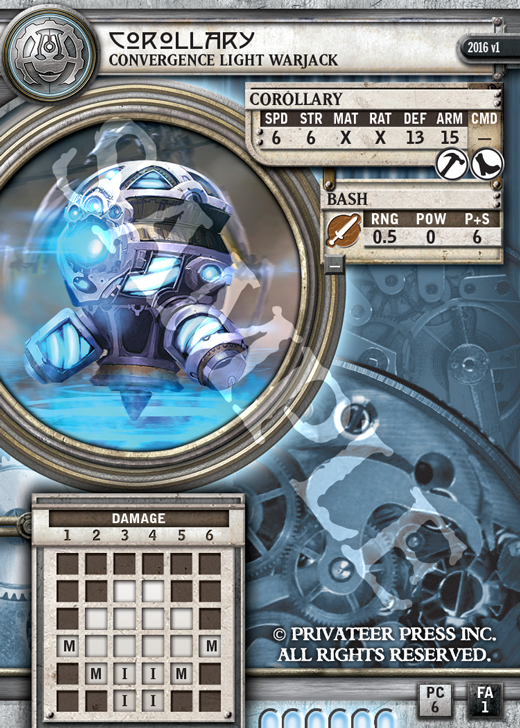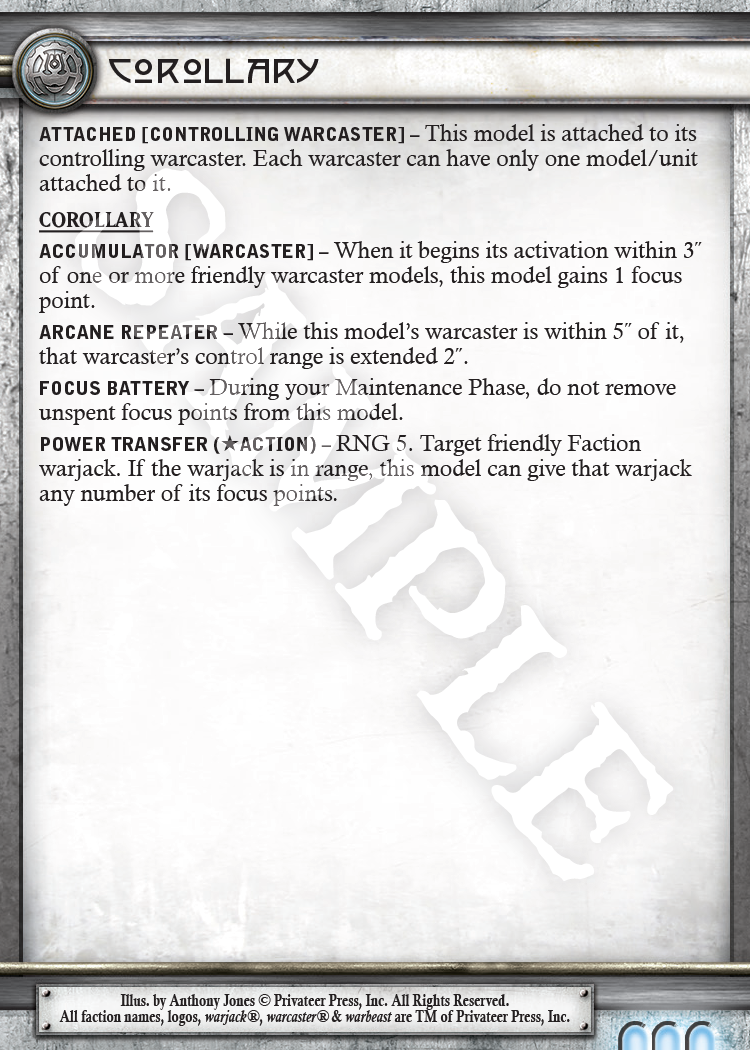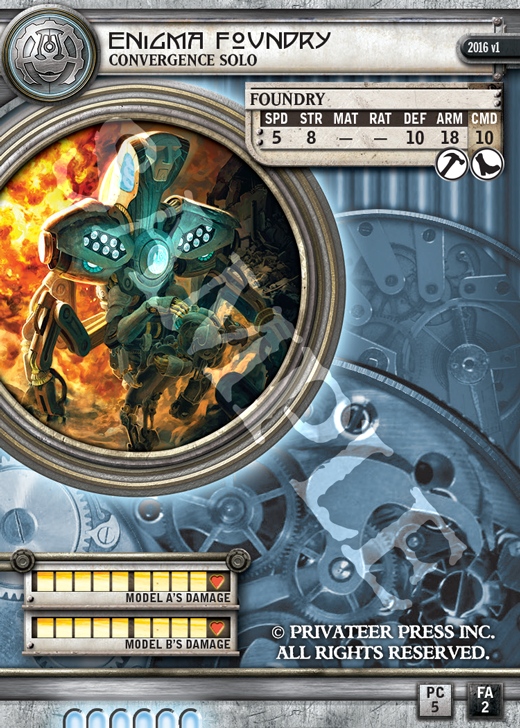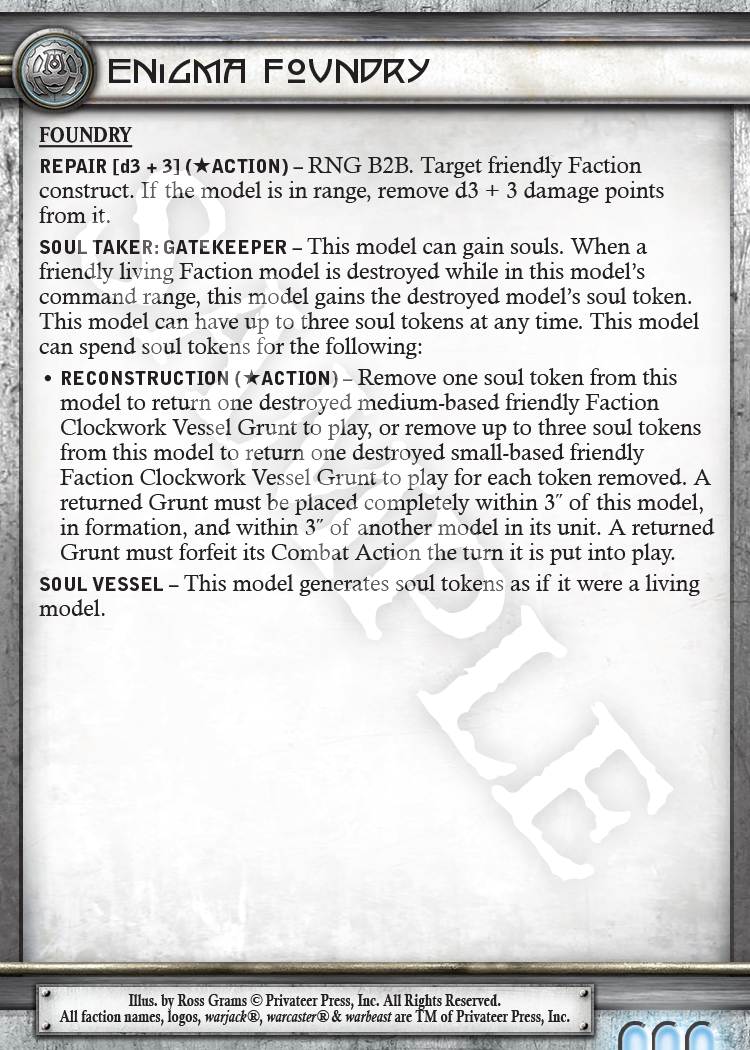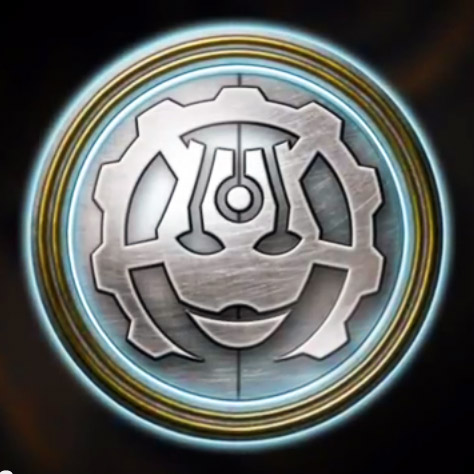Privateer: Convergence in V3


Jason Soles is back to talk all about Convergence of Cyriss in V3. Let’s wind up the clockworks and get started:
Take it away Jason:
The last Faction to really take shape in Mk II, the Convergence of Cyriss was among the easiest to balance in the new editions. In some ways, the Convergence heralded many of the changes we made to the game and influenced how we saw the role of warcasters and warlocks going forward. For example, the success we had with the Convergence warcasters was certainly a topic of conversation when we discussed giving each warcaster and warlock a unique capability beyond their feats. At that time, we were, of course, looking at the Field Marshal abilities each of the Convergence warcasters has.
Later, once we hit on the decision to introduce the Power Up rule to the game, the conversation turned to protecting the unique flavor of the Convergence. We knew we wanted to preserve Focus Induction and soon decided to remove the limit on the amount of focus that could be transferred from one vector to another.
Focus Induction now reads, “When a Convergence warjack spends a focus point during its activation, you can give a focus point to another Convergence warjack if the two are in the same battlegroup and are within 6˝ of one another. Note that a Convergence warjack still can have no more than 3 focus points at any time.”
Though we initially had some doubts, this mechanic proved quite efficient in playtest and gave us exactly what we were looking for. The Convergence would continue to run like clockwork.
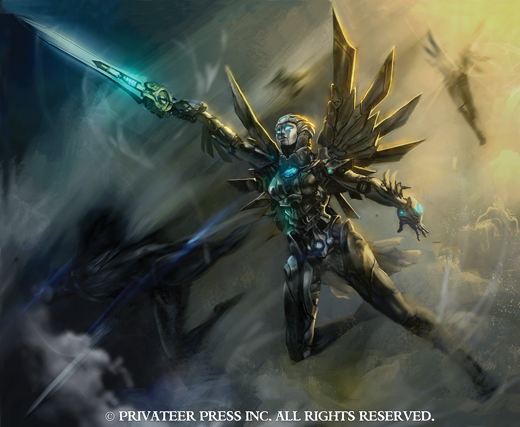
The themes of this Faction are mathematical applications to the arts of war and the arcane, mad science, mechanical solutions, clockwork synergy, and a trans-human evolution of the flesh. The Convergence is dedicated, body and soul, to a mad plan to bring its mechanistic goddess to Caen. Its members appraise the world with mathematical exactness and a methodology that leaves little room for error. For the Convergence, war itself is just another application of the scientific method.
Developing the Faction in the middle of the Mk II cycle, we had already learned many lessons by the time we worked on the Convergence. That meant that on a model-by-model basis, we had a much easier time transitioning the Convergence into the new editions, and that its models had fewer changes overall. Generally, its models performed the way they were supposed to and filled the rolls they were intended to fill. The warjacks of the Convergence benefitted from the introduction of the 1˝ melee range, which affected not only the heavy vectors but also the likes of the Galvanizer, whose gangly sawing arm made it a good candidate for a little more reach. We also gave Flare the ability to temporarily remove Stealth, which was another boon to the Cipher (and the Attunement Servitors).
Continuing this theme, the changes made to Focus Induction meant that if we simply left the Corollary unchanged, its effectiveness would grow by leaps and bounds, and that is exactly what we did.
Consider this: if you position your vectors well, you can have focus flow from your Corollary through all of your warjacks and back to your Corollary again, setting it up to repeat this flow of power on your next turn.
I do not mean to be coy here, but there is not a lot to spoil with regards to the units of the Convergence, either. Every unit was recosted with the new editions in mind, but the units themselves went through few real changes to speak of. Like the vectors, the units of the Convergence were still excelling at the roles they were created to fill.
One place where we made some more global changes was to limit the effective range of place effects by clearly limiting placement to “completely within.” Coupled with another change in which we generally removed the ability of models that were placed into play from attacking that turn, the Enigma Foundry was somewhat changed.
The warcasters changed only slightly more significantly. The changes we made to warjacks in the new editions meant that Forge Master Syntherion’s Synergy spell became even stronger than it was before and needed a change. After some targeted playtesting, we ended up reducing the COST of the spell to 2 and limiting its cumulative bonus to +3.
Father Lucant kept Positive Charge but traded Purification for Discontinuity. The new spell gives the Dispel special rule to the melee weapons of models in Lucant’s battlegroup. We made the change as part of our drive to remove some of the spells that trivially remove upkeep spells from play. Furthermore, instead of Lucant’s feat causing models in his control range to automatically pass their Repair skill checks, now when an affected model makes a Repair roll to determine how much damage it removes, it can add +2 to the roll.
Finally, increasing her already significant movement tricks, Aurora traded her True Path spell for Aerogenesis, which states, “The spellcaster and friendly Faction warrior models/units beginning their activations in its control range gain +2˝ movement when advancing as part of their Normal Movement and Flight ![]() during their activations. Aerogenesis lasts for one turn.” As the Numen of Aerogenesis, flight seemed more appropriate for her than mere Pathfinder
during their activations. Aerogenesis lasts for one turn.” As the Numen of Aerogenesis, flight seemed more appropriate for her than mere Pathfinder ![]() .
.
~More Warmachine / Hordes all month


